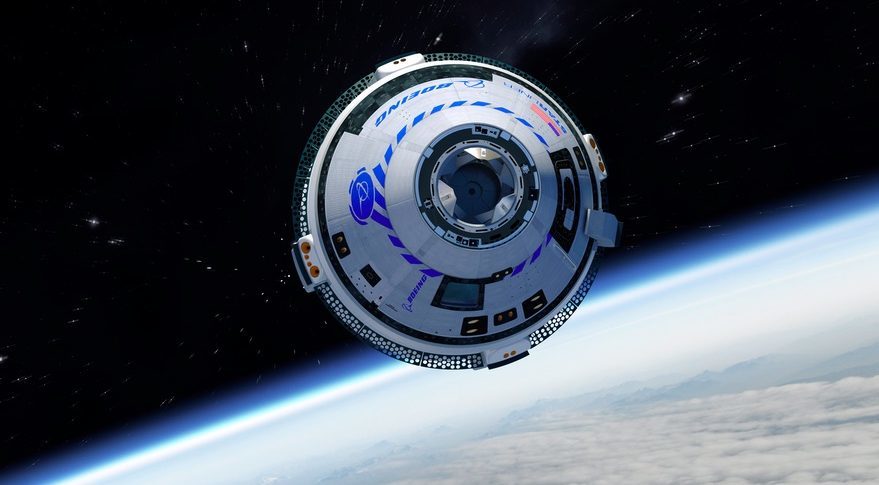8.03.2020

To truly understand how problem plagued Boeing’s orbital flight test of its CST-100 Starliner spacecraft was in December, all one needs to do is to look at the numbers.
- 2: Boeing could have lost the automated spacecraft in flight on two separate occasions, once after launch and again before reentry;
- 3: number of glitches (two software, one communications) that nearly resulted in the loss of the spacecraft;
- 49: gaps in software testing where software bugs might have been found;
- 61: corrective actions recommended by joint independent review team investigating the anomalies;
- 410,000,000: Cost in dollars to Boeing if has to redo an automated flight test to the International Space Station (ISS) before conducting one with crew;
- 4,200,000,000: Cost in dollars of what NASA is paying Boeing to develop and test Starliner.
On Friday, Boeing and NASA officials briefed the media on the results of an independent review team’s investigation of Starliner’s partially successful flight test just before Christmas.
Starliner was unable to reach the space station’s orbit and dock with the orbiting facility due to a combination of a software error and a communications problem.
After controllers got Starliner into a low orbit, engineers began searching for other software bugs. They found and corrected one that could have caused the vehicle’s service module to collide with the capsule after they separated prior to reentry. The collision could have resulted in the capsule burning in the Earth’s atmosphere.
Starliner landed safely at the White Sands Missile Range in New Mexico after an abbreviated two-day flight test. Boeing officials said the software issues notwithstanding, the hardware performed well and largely as expected.
NASA officials on Friday said no decision has been made on whether the space agency will require Boeing to conduct another automated flight to ISS before putting astronauts aboard for a second flight test.
Before any decision is made, Boeing needs to present a plan to NASA for implementing the 61 corrective actions. The space agency will evaluate the results of the changes after Boeing completes them.
Boeing’s contract with NASA has two milestones under which it will receive payments for docking automated and crewed Starliner vehicles with the station.
However, NASA officials said the issue of an extra mission is more complicated because of the difference between the program requirements put out by NASA and how Boeing chose to respond in its winning proposal.
NASA Associate Administrator of Human Exploration and Operations Douglas Loverro the the space agency’s requirement was for Boeing to give the space agency confidence that Starliner could get a crew to the space station. Boeing proposed conducting automated and crewed flights to ISS, which was written into the contract.
After it makes the corrective actions, Boeing could propose that it move directly to the crewed flight test, Loverro said. NASA would evaluate the proposal and decide whether to approve such a plan.
Jim Chilton, senior vice president at Boeing Space and Launch, said the company stood ready to repeat the automated flight test if NASA requests it.
Boeing has taken a $410 million charge against earnings in case a second flight is required. The amount covers the flight, the investigation into the anomalies, and corrective actions.
NASA also will perform an evaluation of the workplace culture of Boeing ahead of crewed test flights through an Organizational Safety Assessment (OSA). The goal of the OSA is to provide a comprehensive safety assessment through individual employee interviews with a sampling from a cross-section of personnel, including senior managers, mid-level management and supervision, and engineers and technicians at various sites.
Loverro said he designated the flight anomalies as a high visibility close call due to their seriousness.
“As there were no injuries during the flight, this close call designation is where the potential for a significant mishap could have occurred and should be investigated to understand the risk exposure and the root cause(s) that placed equipment or individuals at risk,” the space agency said in a press release.
“Since 2004, the year NASA updated this procedural requirement, NASA has designated about 24 high visibility close calls,” the statement added. “For example, in July 2013, astronaut Luca Parmitano discovered a leak in his spacesuit that could have resulted in asphyxiation; as a result, that incident also was given the same designation.”
Boeing said it is tightening up its software development and testing program. The space agency is also improving its oversight of the company.
“NASA also will perform an evaluation of the workplace culture of Boeing ahead of crewed test flights through an Organizational Safety Assessment (OSA),” the press release said. “The goal of the OSA is to provide a comprehensive safety assessment through individual employee interviews with a sampling from a cross-section of personnel, including senior managers, mid-level management and supervision, and engineers and technicians at various sites.”
Quelle: Parabolic Arc

